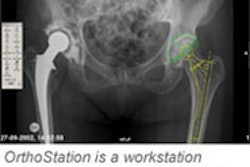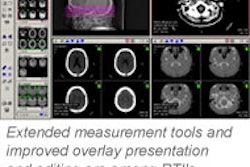Hospitals looking for PACS at this year's RSNA meeting found that most of the products have morphed into one another, becoming less and less unique and more of a commodity. This transformation made the search for the right PACS vendor even more daunting.
The change isn’t all that unexpected given the explosive interest in PACS in recent years, yet it caught many vendors by surprise. Instead of approaching PACS from the hardware-based perspective that has served them well in years past, modality and film vendors have found they need to shift gears and become solutions-based, an approach that is completely foreign to most.
Newer players entering the market (close to 50 alone at this year’s RSNA show), have also begun to erode the market shares of the major vendors, thereby changing the entire market dynamics of PACS.
Market segmentation is also impacting the way PACS is both perceived and purchased. PACS vendors, eager to talk about integrated solutions, have entered the markets for hospital and radiology information systems (HIS/RIS), while IS vendors have responded in kind by entering the world of PACS.
IS providers Cerner, IDX Systems, and McKesson Information Solutions were joined this year by Eclipsys, Meditech, and Misys Healthcare Systems, each going after its core customer base and looking to protect its installed base, both of which have recently been threatened by the PACS vendors offering integrated solutions.
Where there were at best three market tiers to consider in years past (large PACS players -- primarily the modality and film vendors; subsystem vendors; and independents) this year the show was broken into several sectors, including IS companies, service providers, and a host of others.
Few surprises
There were very few surprises at this year’s RSNA show, but some occurred nonetheless.
The integration of PACS with other clinical systems was a recurring theme, with references to enterprise-wide solutions everywhere. Document scanning also played a much bigger role in PACS solutions this year than in years past. Low-cost (<$2,000) software-based solutions from companies like PACSGear that can query the RIS for DICOM worklist data and then convert the information as a DICOM image file generated an exceptionally high degree of interest.
Digital radiography (DR), which made a huge entrée a few years back, was all but absent at the show with the exception of digital mammography systems, which were prevalent in many booths. Many general radiographic-based DR systems remained in the shadows this year, having been given a strong challenge by computed radiography (CR) vendors. CR vendors have put together some fairly innovative CR-based solutions that combine the cost efficiencies of CR with the operational efficiencies offered by DR.
Voice recognition (VR) was a very hot topic, with several new players entering the market. VR is evolving from a straight voice-to-text solution into a next-generation technology that will embrace context-based dictation, significantly increasing the "hit" rate of VR and improving radiologist productivity as well.
A plethora of teleradiology overread service providers also attended the show (nearly two dozen, in fact), all trying to address the shortage of radiologists in the U.S., and each offering its own spin on the particular advantages and benefits of its services. Given the growth in this market sector, it is only a question of time before the America College of Radiology steps in and addresses credentialing, especially when overreads are being done outside the US.
Flat-panel display technology was all over the technical exhibit floor. Nine-megapixel displays, 10- and 12-bit graphics display cards, and remote diagnostics were the buzzwords of this segment.
Storage wasn’t nearly as common a topic of discussion as it was in years past. Most vendors elected to put off offering a single archive solution in deference to providing connectivity to multiple storage options, with nearly all also providing connectivity to storage area-networks (SANs) from EMC, IBM, and others.
Mergers and acquisitions were a huge topic of discussion, with many vendors scratching their heads on the prices paid by Eastman Kodak and Vital Works for their purchases of Algotec and Amicas, respectively. iCad’s merger with CADx Systems also generated a lot of discussion, as did digital mammography in general.
A few vendors de-emphasized their PACS solutions, with Konica Minolta Medical Imaging placing significantly less emphasis on its NetStar PACS than it had in years past (instead opting to focus on its CR and dry laser solutions) and Canon Medical Systems finally acknowledging that it has an exit strategy in place that will take place by year’s end as the company opts to focus on DR instead.
It was incredibly difficult to delineate one PACS offering from the next, as system design, platforms, and graphical user interfaces (GUIs) all seemed to merge into one great big offering. It was the year of the Uni-PACS.
Customer education will no doubt be key in helping to sustain growth in the PACS market. Vendor education will be equally important, because in a commodity market, a totally different approach is needed. Confusion leads to indecision and indecision leads to market decline, something the PACS market cannot and should not allow.
As PACS finally hits the $1 billion sales mark in revenue (more than a decade after it was predicted) the choices are actually more complex than the customers' requirements. It should make for an interesting year.
By Michael J. Cannavo
AuntMinnie.com contributing writer
December 11, 2003
Related Reading
The PACSman’s opinionated view from RSNA 2003, December 4, 2003
The PACSman’s opinionated view from RSNA 2002, December 4, 2002
Stop me if you’ve heard this one about PACS, November 29, 2001
RSNA 2000: The PACSman Awards, November 30, 2000
Copyright © 2003 AuntMinnie.com
Editor’s Note: Michael J. Cannavo is a leading PACS consultant and has authored over 250 articles on PACS technology in the past 15 years. The comments and observations expressed herein do not necessarily reflect the opinions of AuntMinnie.com nor should they be construed as either an endorsement or admonishment of any particular vendor. Instead they should be taken as personal observations from a guy who has, by his own account, been in this industry way too long. Mr. Cannavo can be reached via e-mail at [email protected].



















